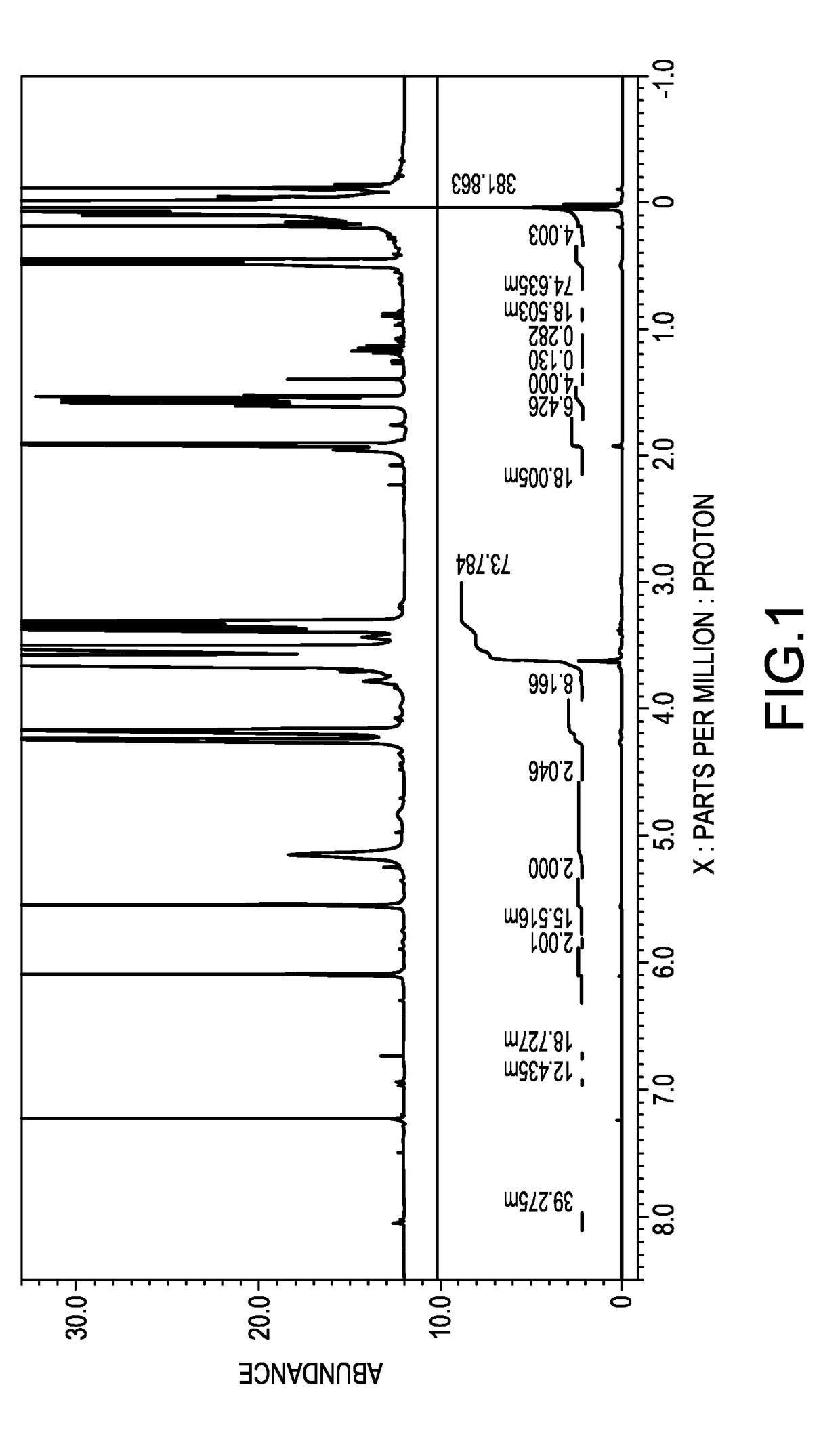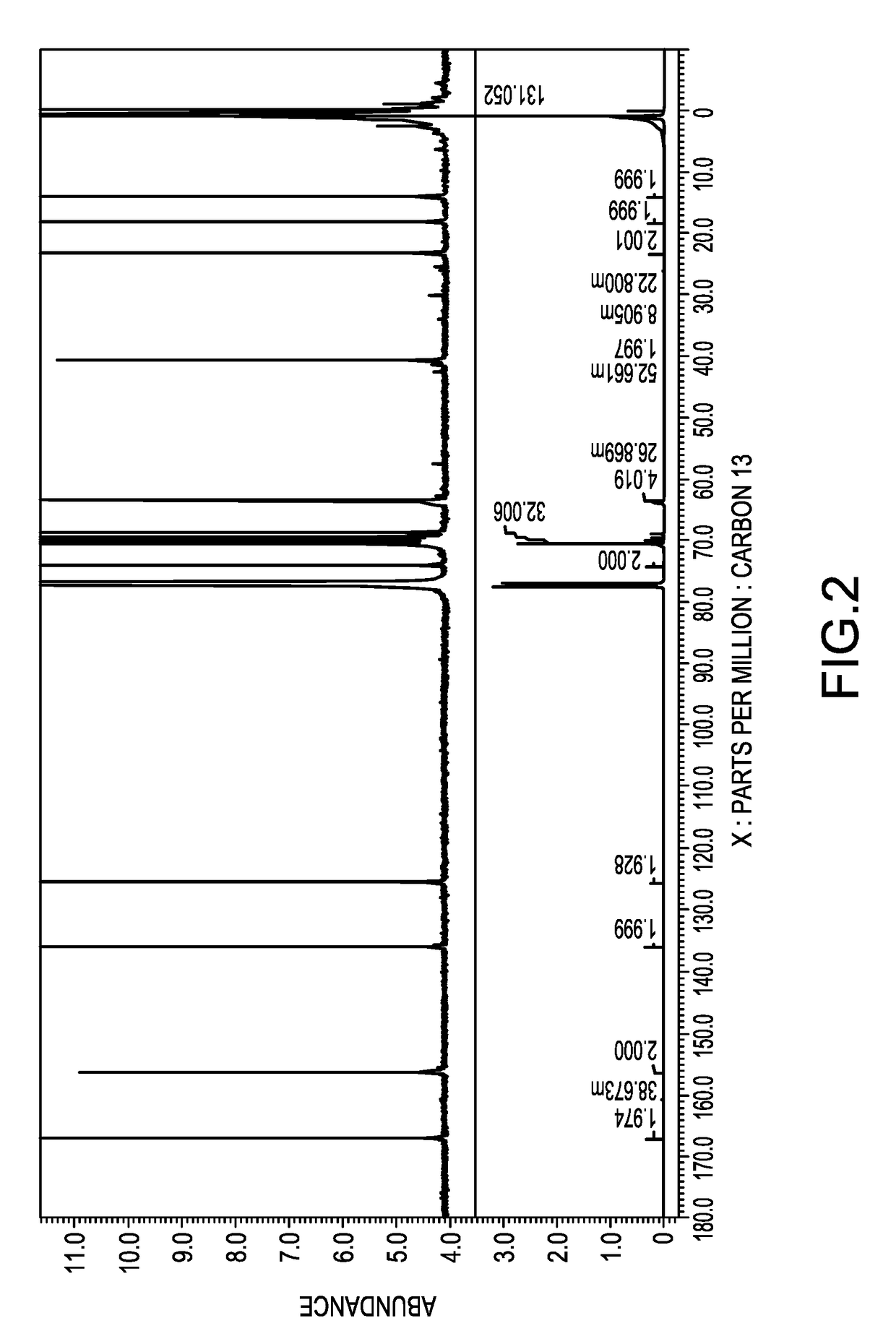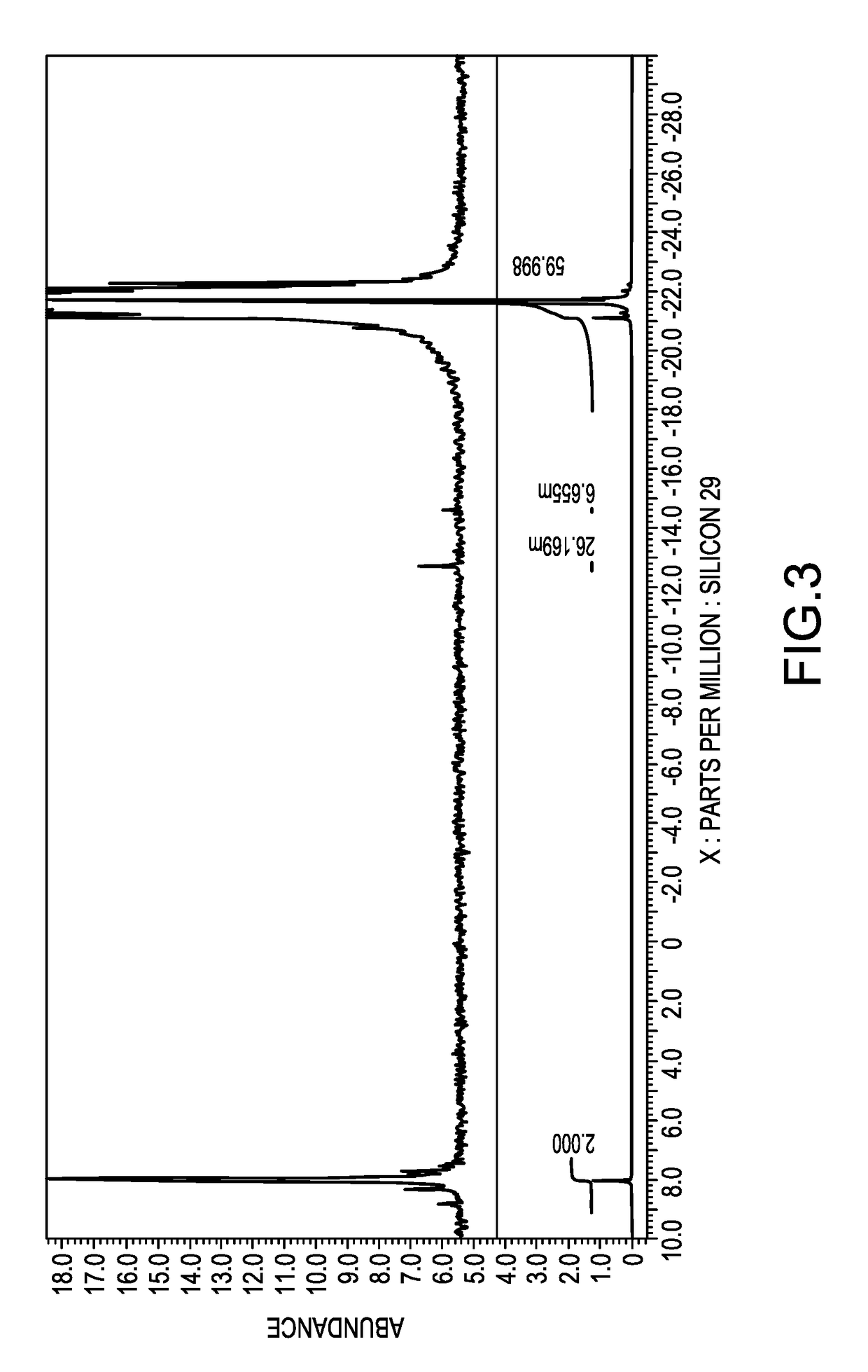Both-terminal modified polysiloxane macromonomer and a method for preparing the same
- Summary
- Abstract
- Description
- Claims
- Application Information
AI Technical Summary
Benefits of technology
Problems solved by technology
Method used
Image
Examples
synthesis example 1
[0057]Synthesis of a polysiloxane having polyoxyethylene residues at the both terminals [II]-1
[0058]To a two-liter flask, added were 309.4 g (0.1 mol) of a polysiloxane having hydrogen atoms at both terminals, represented by the average structural formula: HMe2SiO(Me2SiO)40SiMe2H, 102.5 g (0.25 mol) of polyoxyethylene monoallyl ether represented by the following average structural formula [V]-1, 400 g of isopropyl alcohol as a solvent, and 0.08 g of a solution of a complex of chloroplatinic acid with tetramethyldivinyl disiloxane in ethanol, containing 3 weight % of platinum, and reacted under a reflux of isopropyl alcohol at an inner temperature of 84 degrees C. for 5 hours. The isopropyl alcohol was removed under a reduced pressure to obtain a pale-brown, transparent liquid. This was a mixture of 0.1 mole of a polysiloxane which has polyoxyethylenes at both terminals and is represented by the following average structural formula [II]-1 and 0.05 mole of the unreacted compound repre...
example 1
[0060]Synthesis of Both Terminal-Modified Polysiloxane Macromonomer [I]-1
[0061]To a 500-milliliter flask, added were 173.9 g of the mixture obtained in Synthesis Example 1 which contained 0.1 mole of a hydroxyl group, 0.12 g of bis-t-butylhydroxytoluene or BHT, 0.48 g of p-methoxyphenol or MQ, and 0.048 g of iron(III)acetylacetonate, and stirred for one hour to thereby dissolve the iron catalyst in the aforesaid mixture. Then, 39.8 g (0.2 mol) of OCN(C2H4O)2C(═O)C(Me)=CH2, Karenz MOI-EG, ex SHOWA DENKO Co., was added dropwise from a dropping funnel to the mixture at an inner temperature of 25 degrees C. Subsequently, the mixture was maintained at 40 degrees C. for 3 hours, to which 19.2 g of methanol was then added to thereby stop the reaction. The reaction liquid was dissolved in 500 g of hexane, to which 500 g of acetonitrile was then added and liquid-liquid extraction was conducted. After removing the lower acetonitrile phase, another 500 g of acetonitrile was added. This liquid-...
example 2
[0067]Synthesis of Both Terminal-Modified Polysiloxane Macromonomer [I]-2
[0068]To a 500-milliliter flask, added were 173.9 g of the mixture obtained in Synthesis Example 1 which contained 0.1 mole of hydroxyl group, 0.12 g of bis-t-butylhydroxytoluene or BHT, 0.48 g of p-methoxyphenol or MQ, and 0.048 g of iron(III)acetylacetonate, and stirred for one hour to thereby dissolve the iron catalyst in the aforesaid mixture. Then, 31.0 g (0.2 mol) of OCN(C2H4O)C(═O)C(Me)=CH2, Karenz MOI, ex SHOWA DENKO Co., was added dropwise from a dropping funnel to the mixture at an inner temperature of 25 degrees C. Subsequently, the mixture was maintained at 40 degrees C. for 3 hours, to which 19.2 g of methanol was then added to thereby stop the reaction. The reaction liquid was dissolved in 500 g of hexane, to which 500 g of acetonitrile was then added and liquid-liquid extraction was conducted. After removing the lower acetonitrile phase, another 500 g of acetonitrile was added. This liquid-liquid...
PUM
| Property | Measurement | Unit |
|---|---|---|
| Mass | aaaaa | aaaaa |
| Hydrophilicity | aaaaa | aaaaa |
| Mass ratio | aaaaa | aaaaa |
Abstract
Description
Claims
Application Information
 Login to View More
Login to View More - R&D
- Intellectual Property
- Life Sciences
- Materials
- Tech Scout
- Unparalleled Data Quality
- Higher Quality Content
- 60% Fewer Hallucinations
Browse by: Latest US Patents, China's latest patents, Technical Efficacy Thesaurus, Application Domain, Technology Topic, Popular Technical Reports.
© 2025 PatSnap. All rights reserved.Legal|Privacy policy|Modern Slavery Act Transparency Statement|Sitemap|About US| Contact US: help@patsnap.com



